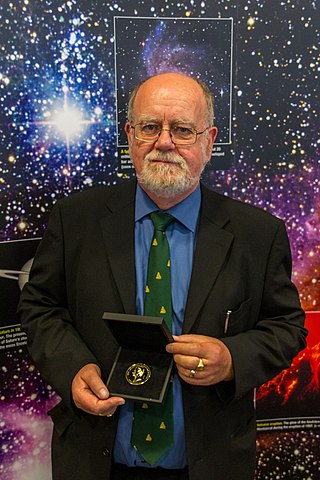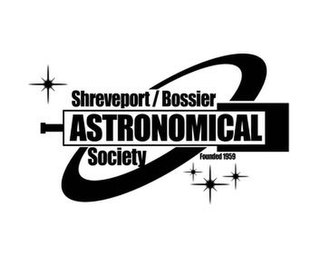 | |
| Established | 1954 |
|---|---|
| Location | |
| Website | http://www.theasg.org.uk/ |
The Astronomical Society of Glasgow (ASG) was founded in 1954 in Glasgow, Scotland, by amateur astronomers and is dedicated to promoting an interest in Astronomy.
 | |
| Established | 1954 |
|---|---|
| Location | |
| Website | http://www.theasg.org.uk/ |
The Astronomical Society of Glasgow (ASG) was founded in 1954 in Glasgow, Scotland, by amateur astronomers and is dedicated to promoting an interest in Astronomy.
Membership of the Society is open to everyone and all ages are welcomed. The society organises regular public events but there are a number of member only events and benefits, including a newsletter, Dark Sky observing events and access to the Acre Road telescope at the University of Glasgow. [1]
The Society holds nine regular monthly lecture meetings from September through to May each year. Lectures are held in the University of Strathclyde in Glasgow City Centre at 7.30pm and are normally on the third Thursday of each month, however this does occasionally vary to accommodate the speakers.
All topics of Astronomy are covered in the lectures from Planetary Science to Astrophotography and The Search for Life Beyond Earth. The lectures are free and are open to members and non-members alike.
The Society is involved in a number of outreach events, bringing Astronomy to the people of Glasgow and further afield.
In past few years, the Society has also been involved with events at RSPB Lochwinnoch and Rouken Glen. They have also organised Astronomy Weekend Courses with Kindrogan Field Centre.
In 2011, the Society organised a free Stars Over The Botanics as part of the BBC's Stargazing Live and in 2012, they were part of the BBC's Discovery Night, based at the Glasgow Botanic Gardens and the nearby Oran Mor.
In 2014, the Society took part in a Stargazing Evening at Whitelee Wind Farm with Glasgow Science Centre. "Stargazing at Whitelee". Archived from the original on 4 March 2016. Retrieved 31 December 2023.
The story of Glasgow’s astronomical societies begins in 1809 when the Glasgow Society for Promoting Astronomical Science was inaugurated. Ambitious plans were prepared for an Observatory to cost £1,500 and a site was chosen on Garnethill. The Convenor, Dr Andrew Ure, went to Largs to confer with Sir Thomas Makdougall Brisbane and also went to London to confer with leading scientists of the day. The Observatory was built - an ornate Egyptian-style building, equipped with some excellent instruments. However, the Society ran out of funds, the Observatory was surrounded by new building and became unsuitable for its purpose. The Society was disbanded in 1822 and some of the instruments were identified as being sold off although others just ‘disappeared’. Around 1830-32 the building was demolished.
A West of Scotland Branch of the British Astronomical Society was founded in 1894 and based in Glasgow. The inaugural meeting took place on 23 November that year when members were addressed by E. W. Maunder, founder of the BAA and Editor of the Journal. His subject was ‘In Pursuit of a Shadow’ - an account of the recent eclipse expedition.
In 1904, the Branch requested permission to enrol associated not directly connected with the BAA. The resulting increase in membership was so great that it was found necessary to seek a new meeting place. In October 1905, the Branch met for the first time in the new buildings of the Royal Technical College, Glasgow. (This association has happily been maintained and to this day the Society meets within the University of Strathclyde). Also about 1905, the Branch obtained authority to enrol members resident in any part of Scotland and eventually in 1937, the name was changed to ‘Scottish Branch’.
With the close of the session 1943-44, the Branch completed fifty years of useful life and this was celebrated, amongst other things, by the re-election of Professor Smart to the Jubilee Chair. There was a civic reception in the City Chambers, and a Dinner was held. The Astronomer Royal, Sir Harold Spencer-Jones, addressed the Branch.
About ten years later, it was decided to wind up the Branch and reconstitute it as The Astronomical Society of Glasgow, affiliated to the BAA. This took effect on 30 April 1954. [1]
In 1994, the asteroid 5805 Glasgow was named for the city of Glasgow and the Astronomical Society of Glasgow. The current Logo for the Society is based around the asteroid. The asteroid orbits the sun at semimajor axis 2.6AU, has a modest eccentricity of 0.11 and an inclination of 12 degrees. Its diameter is about 19 km if a C-class asteroid or 10 km if S-class (equally likely). Thus its surface area is larger than that of the city for which it is named.
The Astronomical Society of Glasgow is a member of the British Association of Planetaria and is affiliated to the British Astronomical Association and the Scottish Astronomers' Group. The society is a member of the Federation of Astronomical Societies, and is a registered Scottish charity (Charity Number SCO15035).

Heather Anita Couper, was a British astronomer, broadcaster and science populariser.
The British Astronomical Association (BAA) was formed in 1890 as a national body to support the UK's amateur astronomers.

John Campbell Brown was a Scottish astronomer who worked primarily in solar physics. He held the posts of Astronomer Royal for Scotland, the Regius Professor of Astronomy at the University of Glasgow, and honorary professorships at both the University of Edinburgh and the University of Aberdeen.

Professor Anneila Isabel Sargent FRSE DSc is a Scottish–American astronomer who specializes in star formation.
Thomas Logie MacDonald FRSE FRAS (1901–1973) was a Scottish astronomer and politician, and eponym of lunar crater McDonald.
Martin P. Mobberley is a British amateur astronomer, author, and former electronics engineer.
Colin Alistair Ronan FRAS was a British author and specialist in the history and philosophy of science.
The Regius Chair of Astronomy is a Regius Professorship in the University of Glasgow.
Dame Carole Jordan,, is a British physicist, astrophysicist, astronomer and academic. Currently, she is Professor Emeritus of Astrophysics at the University of Oxford and Emeritus Fellow at Somerville College, Oxford. From 1994 to 1996, she was President of the Royal Astronomical Society; she was the first woman to hold this appointment. She won the Gold Medal of the Royal Astronomical Society in 2005; she was only the third female recipient following Caroline Herschel in 1828 and Vera Rubin in 1996. She was head of the Rudolf Peierls Centre for Theoretical Physics at the University of Oxford from 2003 to 2004 and 2005 to 2008, and was one of the first female professors in Astronomy in Britain. She was made a Dame Commander of the Order of the British Empire in 2006 for services to physics and astronomy.

The Association in Scotland To Research into Astronautics (ASTRA), is a membership-based society that concerns itself with all matters related to space research. Its current center of operations is in the Scottish city of Glasgow and it is affiliated to a number of other bodies, including the Federation of Astronomical Societies and the Glasgow Council for the Voluntary Sector.

Mills Observatory is the first purpose-built public astronomical observatory in the UK, located in Dundee, Scotland. Built in 1935, the observatory is classically styled in sandstone and has a distinctive 7 m dome, which houses a Victorian refracting telescope, a small planetarium, and display areas. The dome is one of two made from papier-mâché to survive in the UK, the other being at the Godlee Observatory.
Thomas Boles is a Scottish amateur astronomer, discoverer of astronomical objects, author, broadcaster and former communications and computer engineer, who observes from his private "Coddenham Observatory" in Coddenham, Suffolk, United Kingdom. He is known for having discovered a record number of supernovae. The main-belt asteroid 7648 Tomboles is named in his honor.
Mervyn Archdall Ellison was an Irish astronomer. He was recognized as a world authority on solar physics and the effect of solar flares on the Earth.

The Institution of Engineers and Shipbuilders in Scotland (IESIS) is a multi-disciplinary professional body and learned society, founded in Scotland, for professional engineers in all disciplines and for those associated with or taking an interest in their work. Its main activities are an annual series of evening talks on engineering, open to all, and a range of school events aimed at encouraging young people to consider engineering careers.

Ian Morison FRAS is an astronomer and astrophysicist who served as the 35th Gresham Professor of Astronomy.

The Shreveport-Bossier Astronomical Society, Inc. is a 501(c)(3) tax-exempt organization and one of the oldest continuously meeting astronomy clubs in the United States of America. Originally named the Shreveport Junior Astronomical Society, it was founded in 1959 by a group of high school students led by a fellow student, Sara Worley. Fifteen people attended an organizational meeting to establish a club on October 10, 1959. Officers were elected at this meeting and Sara Worley became the first president of the Shreveport Junior Astronomical Society. A second organizational meeting took place on October 17, 1959, where a constitution and additional society-related details were established. The constitution was approved, signed, and ratified at a third meeting on October 24, 1959, although there was no State of Louisiana charter. The first public meeting of the club was held on November 14, 1959 at Centenary College of Louisiana. Two goals were announced: build an observatory and procure a planetarium for the Shreveport area. Within five years, these two goals were accomplished through local participation and fundraising.

The Hampstead Scientific Society (HSS) in north London was founded in July 1899 as the Hampstead Astronomical and General Scientific Society by P.E. Vizard. It aims to be inclusive, promoting and nurturing an interest in all branches of science, while catering for wide levels of knowledge, from layman to expert alike. The society maintains specialist astronomy and meteorology sections and runs a programme of lectures on various scientific topics in the Hampstead area of North West London.

Sheila Rowan is a Scottish physicist and academic, who is Professor of Physics and Astronomy at the University of Glasgow in Scotland, and director of its Institute for Gravitational Research since 2009. She is known for her work in advancing the detection of gravitation waves. In 2016, Rowan was appointed the (part-time) Chief Scientific Advisor to the Scottish Government.
Andrew John Hollis was a British astronomer, chartered engineer and chartered loss adjuster. He was the founding director of the Asteroids and Remote Planets Section of the British Astronomical Association (BAA) and was a pioneer in astronomical photoelectric photometry.

The Astronomical Society of Edinburgh (ASE) is an association of amateur astronomers and other individuals interested in astronomy, which is based in Edinburgh, Scotland. The objectives are to encourage astronomical study and observation and to increase popular interest in astronomy.